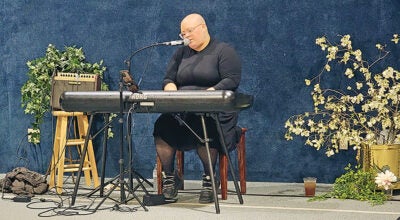Museum exhibiting comic art
Published 12:00 am Tuesday, September 6, 2022
The Huntington Museum of Art will present POW! Comic Drawings from the Permanent Collection through Oct. 25.
POW! Comic Drawings from the Permanent Collection will feature original comic book art, comic strips and sequential drawings created by some of America’s most noted comic artists, such as Bob Kane, Ernie Chan and Neil Adams, from the Huntington Museum of Art’s Michael Reynolds Collection of American Popular Culture.
“Comic culture is decidedly mainstream,” said John Farley, HMA senior curator/exhibition designer. “It is no longer a niche hobby. The original artwork for newspaper comic strips and comic books is coveted by collectors and exhibited by major museums. Once primarily an American art form, comic books and the pantheon of characters spawned within their pages now connect legions of devoted fans around the world through a common language. Comic sales have risen consistently for decades, and consumer demand continues to reach astonishing heights, a trend supercharged by the popularity of graphic novels and digital downloads.”
Throughout its history, comic art has done more than entertain. “Comic art represents a natural evolution of the political cartoons and satirical caricatures which have been printed in European and American newspapers and periodicals since the early 1800s,” Farley said. “Cleverly designed interplays of text and image allowed for effective communication with a wide audience, regardless of age or literacy, making this format ideal for delivering social critique, propaganda and entertainment.”
The first comic book featuring original cartoon artwork was released in 1935. However, the Golden Age of Comic Books truly began in 1938 with Action Comics, no. 1, when an extraterrestrial infant refugee with superhuman potential crash landed in the idyllic American Midwest. The boy’s adopted parents named him Clark Kent, but humanity came to know this archetypal superhero, champion of the oppressed, by his alter-ego: Superman.
By the mid-20th century, in addition to a growing number of mainstream comic creators, diverse independent artists, writers and publishers were producing self-expressive comic art that commented on culture and politics from new perspectives.
Barriers continue to be transformed into frontiers for creativity as artists and writers who once had limited voices in the traditional comic industry now enjoy a wider audience and larger platforms to tell their stories.
This exhibit is sponsored in part by Truist WV Foundation and presented with support from The Isabelle Gwynn and Robert Daine Exhibition Endowment.
This program is presented with financial assistance from the West Virginia Department of Arts, Culture and History and the National Endowment for the Arts, with approval from the West Virginia Commission on the Arts.






